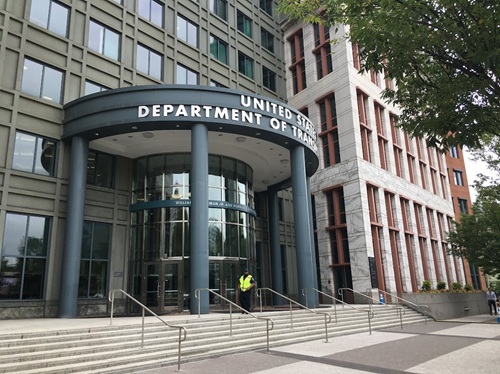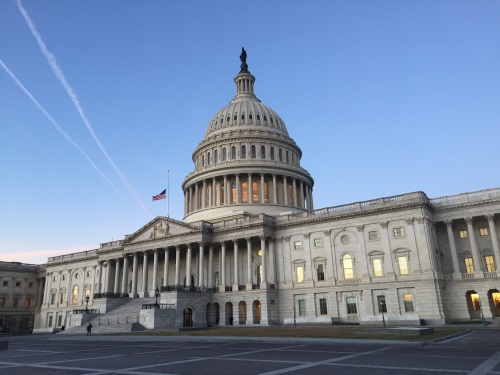The expected enactment upon signing by President Biden of the 99-page debt ceiling deal – the Fiscal Responsibility Act of 2023, which was passed by the House of Representatives on May 31 and then by the Senate on June 1 – could result in several major transportation funding reductions.
[Above photo by AASHTO]
The headline action of this legislation is the suspension of the federal government’s debt ceiling – as opposed to increasing the debt ceiling by a specific amount – through January 1, 2025. Analysis of the legislation by the American Association of State Highway and Transportation Officials also identified several major cuts or rescissions to transportation funding measures.
The first is the rescission of an estimated $28 billion in unobligated COVID-19 pandemic funds, with the December 2020 Highway Infrastructure Program in the CRRSAA included in that funding pullback, which would take place upon bill enactment.
According to the Federal Highway Administration, $1.67 billion of this aid remained unobligated as of May 30, though states and localities are quickly obligating as much as possible this week ahead of the debt deal’s passage.
However, the debt ceiling deal also specifically protects advance appropriations funding from the General Fund in the $1.2 trillion Infrastructure Investment and Jobs Act – such as the National Electric Vehicle Infrastructure formula program and the Bridge Formula Program – from any future Congressional rescission by not allowing cuts to these programs to count towards any new spending or “pay-fors.”
The bill also imposes two-year discretionary spending caps for fiscal years 2024 and 2025, bringing back the Budget Control Act that governed federal spending between 2012 and 2021. However, contract authority programs that receive obligation limitation, such as the Federal-aid Highway Program, are exempt from this cap.
In pure monetary terms, defense spending would be capped at $886 billion in FY 2024 and $895 billion in FY 2025, which would represent a slight increase from $858 billion in FY 2023. Meanwhile, non-defense spending would be capped at $704 billion in FY 2024 and $711 billion in FY 2025, a notable reduction from $744 billion in FY 2023.
Another major provision in the debt ceiling bill are project permitting reform measures taken from the BUILDER Act, known as HR 1577. Those provisions include the amending of agency considerations in Section 102 of the National Environmental Policy Act or NEPA; further codification of the One Federal Decision framework; allowing for the reliance on analysis included in programmatic environmental document in subsequent documents; and allowing for the adoption of categorical exclusions where the action is substantially the same as an action previously categorically excluded by another agency.
The debt ceiling agreement also creates a new administrative/regulatory “PAYGO” funding mechanism whereby a federal department or agency is considering a “discretionary administrative action” that would increase mandatory federal spending by more than $100 million in a year or more than $1 billion over a decade would need to also decrease federal spending by the same amount.
In a push for timely consideration of annual funding bills, the agreement also institutes a 1 percent cut to the Continuing Resolution – a frequently-used short-term funding patch – if the 12 full-year appropriations measures for FY 2024 and FY 2025 are not in place by January 1 of 2024 and 2025, respectively.
 Top Stories
Top Stories
USDOT Issues $1B in Local Road Safety Funding
January 2, 2026 Top Stories
Top Stories

